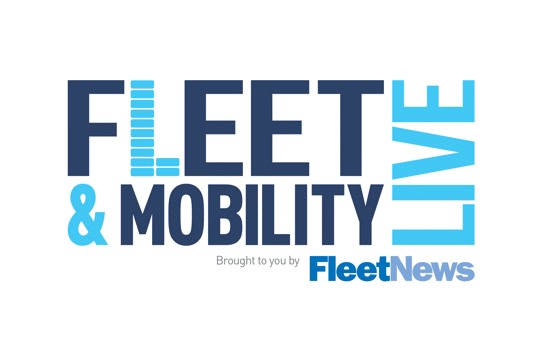By Ian Goodwin, tax partner at Mazars
Do you pay car allowances and business mileage?
After a long running saga over how National Insurance Contributions (NIC) apply where car allowances are paid to individuals undertaking business mileage, a big step was taken to resolving this issue with the recent Upper Tier Tribunal (UTT) ruling in the respective cases of Laing O’Rourke Services and The Commissioners for HMRC and Willmott Dixon Holdings.
In short, the taxpayers won and NIC Refund claims may now be possible.
The case was in effect two appeals combined; one from Laing O’Rourke who had previously lost their First Tier Tribunal (FTT) case against HMRC involving a reclaim of about £2.2 million of NIC; the other from HMRC who had previously lost their FTT case against Willmott Dixon.
Overview
Many employers offer their employees a car allowance, which is essentially an additional payment alongside their salary to enable their employees to have access to a personal vehicle, rather than providing them with a company vehicle.
One major difference between the use of a car allowance and a company vehicle is the amount in which employers can reimburse employees for business mileage in accordance with HMRC’s approved mileage allowance.
Employers can reimburse employees up to 45p (up to 10,000 miles), or 25p (where business mileage exceeds 10,000 miles) per mile for personally owned vehicles, rather than the various rates for a company vehicle (dependant on engine size and updated quarterly) tax and NIC free.
However, it is important to also note that the rate only drops to 25p per mile after 10,000 miles for tax relief purposes. Payments can be made NIC free at 45p per mile regardless of the number of miles travelled in a tax year.
Where employers reimburse their employees at less than HMRC’s approved mileage rates, employees have always been able to reclaim income tax relief on the difference by submitting a claim to HMRC (either via self-assessment or through form P87).
However, following the Total People case originally heard back in 2010-12 as well as now Laing and Willmott, NIC refunds may be able to be sought too.
What has happened to change the landscape?
One of the key points of this hearing is that the UTT confirmed that the car allowances meet the definition of the Relevant Motoring Expenditure (RME) within the NIC regulations and that is where a difference had arisen between the amounts reimbursed by employers and HMRC’s approved mileage rates, the “difference” in payment should not have been subject to NIC, and therefore a NIC refund claim can be made.
What should you do next?
HMRC have been given until September 4 to appeal the UTT ruling, which could potentially delay a decision, and therefore any likelihood of potential refunds being paid out by HMRC.
Until the status of any appeal is known, employers may not want to rush into submitting full claims to HMRC, which would generally be limited to NIC in the past six years under the Limitations Act, or potentially longer if a reasonable excuse can be agreed, as to why a claim has not been made earlier.
This is likely to be applicable for consideration given the lack of clarity on this issue due to the historical position taken by HMRC.
Employers are therefore urged to initially make protective claims as soon as possible to protect earlier years and increase the likelihood of swifter resolution given that more updates are likely to shape how any repayments could arise in the future.
UPDATE: HMRC has decided not to appeal the ruling.
Could you have a claim?
Where you have the following fact pattern, an initial exercise can be undertaken to identify the potential quantum of any claim and to make sure you have appropriate records (business mileage claimed and amounts paid) to support a potential claim:
- Car or van allowances have been paid to employees.
- Business mileage has been paid to those employees at less than 45p per mile.
- Business mileage payments have been made historically (e.g., over the past 6 years).
You will then be better placed to determine how to proceed once HMRC have confirmed whether they intend to appeal the UTT ruling by September 4.
This could also be a good time to re-examine any policies in this area to assess what to do with travel expenses and reward in the future.
What does a claim look like in terms of potential refunds?
For example, if you have 100 eligible employees and they each completed 10,000 business miles each tax year which were reimbursed at 15p per mile, the employer’s NIC saving at 13.8% would be £41,400 for each year for which a claim could be made.
There would also be a corresponding refund claim for the employee NIC at 12% (assuming earning less than the Upper Earnings Limit) of £36,000 for each year, or £360 per employee per year.
Therefore, going back six years would leave an employer NIC reclaim of approximately £250,000 and a total employee NIC reclaim of £216,000. This is before any consideration of interest due or potential interaction with Apprenticeship Levy charges has been considered.
Key takeaways
For the employer – look at your records and consider if you could have a protective claim to make in relation to employer and employee Class 1 NIC and potentially Class 1A NIC where total mileage has been reported on Form P11D (e.g. if provided a fuel card to an employee with a personal vehicle).
For the employee – if you have not made a claim for tax relief historically, make a claim now.
HMRC has now decided not to appeal the tribunal ruling. Read the latest on this story here.























Login to comment
Comments
No comments have been made yet.